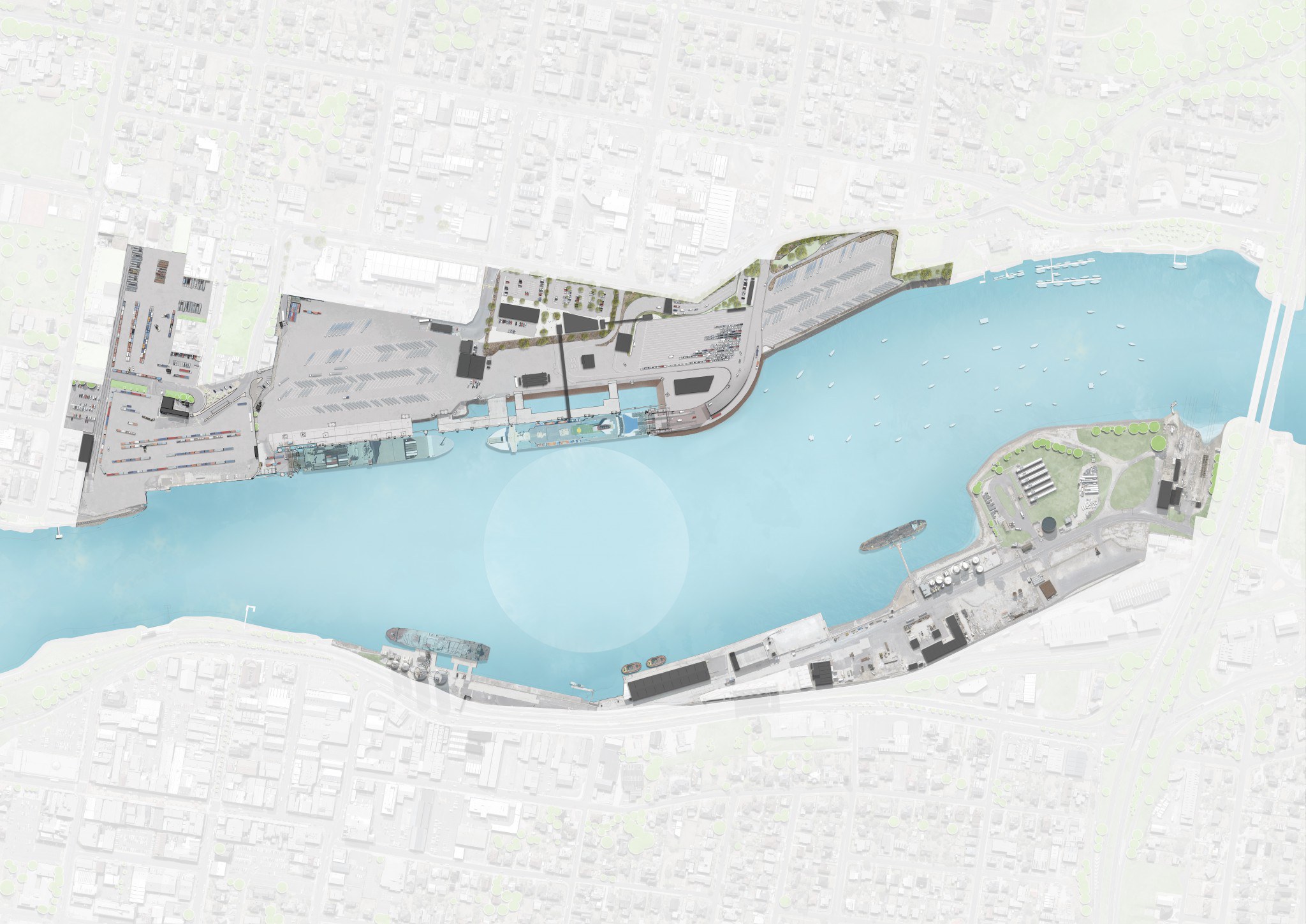Devonport East Redevelopment
Location
Port of Devonport, Tasmania
Type of infrastructure
Port
Project scale
MAJOR (B4/F150)
Time frame
Near term (0–5 years)
Current Phase
Early works and first main package procurement commenced.
Location
Port of Devonport, Tasmania
Type of infrastructure
Port
Project scale
MAJOR (B4/F150)
Time frame
Near term (0–5 years)
Current Phase
Early works and first main package procurement commenced.
The Port of Devonport is one of Tasmania’s fastest-growing ports and is a critical gateway for the state’s trade and tourism. The Port supports a variety of industries, including tourism, container freight and agricultural products.
The Port of Devonport supports Bass Strait operators TT-Line and SeaRoad, who currently occupy two of the three available berths at Devonport East and more than 14 hectares of terminal operating space.
TT-Line
TT-Line is a State-owned Corporation that operates two roll-on, roll-off (RORO) passenger and freight ferries between the Port of Devonport and Port of Melbourne. The Spirit of Tasmania ferries transfer more than 446,000 passengers annually and provide a critical fast overnight freight service.
TT-Line is planning to replace the current fleet of ferries with two new larger fast ferries. These ferries will support a capacity increase of more than 40% and provide improved customer experience and efficiency. TT-Line is currently planning to relocate its Victorian operations to a new 12-hectare purpose-built facility at Geelong Port in 2022.
SeaRoad
SeaRoad is an established privately-owned Australian integrated transport and logistics service provider specialising in Bass Strait shipping and logistics. SeaRoad Logistics provides an end-to-end freight logistics service to and from Tasmania, including a dedicated daily cargo shipping service between Melbourne and Tasmania with ships SeaRoad Mersey II and MV Liekut
SeaRoad is planning to introduce a larger purpose-built RORO vessel in 2022-2023 to complement and expand the services offered by the SeaRoad Mersey II. In March 2021, SeaRoad welcomed larger charter vessel MV Liekut to replace SeaRoad Tamar on their cargo shipping service until a new vessel is purchased.

In 2018, TasPorts launched its Port Master Plan to guide significant investment in Tasmanian port infrastructure over a 15-year period.
An integral part of the 15-year plan is a significant redevelopment and upgrade of infrastructure at the Port of Devonport to accommodate larger vessels and extend existing berthing facilities to support Bass Strait operators and improve efficiencies.
The initiative at the Port of Devonport is the largest package of works proposed within the Port Master Plan. The redevelopment will deliver two main terminals at the Port of Devonport, accommodating new vessels and supporting long-term increased freight capacity and passenger numbers.
Current Bass Strait operators at the Port of Devonport have committed to purchasing larger vessels within the next three years, and by 2031, expect to be handling an additional 85,000 full and empty TEUs and an additional 7,000 freight cars each year.
To enable TT-Line and SeaRoad to meet these growth ambitions, realise freight capacity increases, and ensure that Devonport remains a key trade and tourism link, marine and landside infrastructure improvements are required on the Eastern berths.
The major redevelopment will significantly enhance trade throughput and operational efficiencies through improved infrastructure and larger ships' facilitation, driving regional tourism and supporting mainland connectivity.
This vital project will ensure terminal infrastructure that actively facilitates and enables growth in throughput over a 50-year horizon for Bass Strait shipping services.
Devonport East Redevelopment will see a $240 million investment and deliver two reconfigured and upgraded terminals (Terminal 2 and 3) at Devonport East, accommodating new vessels and supporting increased freight capacity and passenger numbers. It will also deliver a smaller refurbished Terminal 1, which will provide an opportunity for additional revenue growth not currently available to TasPorts.
Following further planning and stakeholder engagement, TasPorts selected a preferred option for the redevelopment, which will minimise operational disruption during the works and maximises growth opportunities for customers, TasPorts and the Tasmanian economy.
This option sees TT-Line and SeaRoad remaining within the eastern Port of Devonport and growing operational areas into currently underutilised port land. The option will see the following:
The Devonport East Redevelopment is a generational opportunity for TasPorts to future proof the Port of Devonport with leading edge port technology and sustainability initiatives and provide the capacity it and Tasmania need for the next 50 years.
Key project benefits include:
The delivery of this project is of critical importance to the state of Tasmania and the Port of Devonport, ensuring fit-for-purpose port infrastructure, terminal and berthing space for the next 50 years.
The development is aligned with the following government strategies:
Tasmanian Trade Strategy 2019-2025
A coordinated whole-of-government approach to grow trade (domestically and internationally) with a focus on building trade in key sectors, showcasing Tasmania in priority markets, supporting trade logistics and market access, and building the export capabilities of Tasmanian businesses.
Our Infrastructure Future: 30-Year Infrastructure Strategy
Informing the Tasmanian Government’s infrastructure investment decisions and ensuring appropriate long-term planning for Tasmania’s future.
T21 Visitor Economy Action Plan 2020-2022
A partnership between the Tasmanian Government and Tourism Industry Council Tasmania, the action plan focuses on rebuilding tourism and hospitality, following the impact of COVID-19, to once again be a valuable contributor to Tasmania’s economy growing jobs for Tasmanians and benefits for regional communities.
National Freight and Supply Chain Strategy Action Plan 2019/20
The Action Plan was endorsed by the Transport and Infrastructure Council in August 2019 and highlights TasPorts Master Plan and the Bass Strait Ferry Replacement Programmes as responses to address critical actions areas identified in the report.
